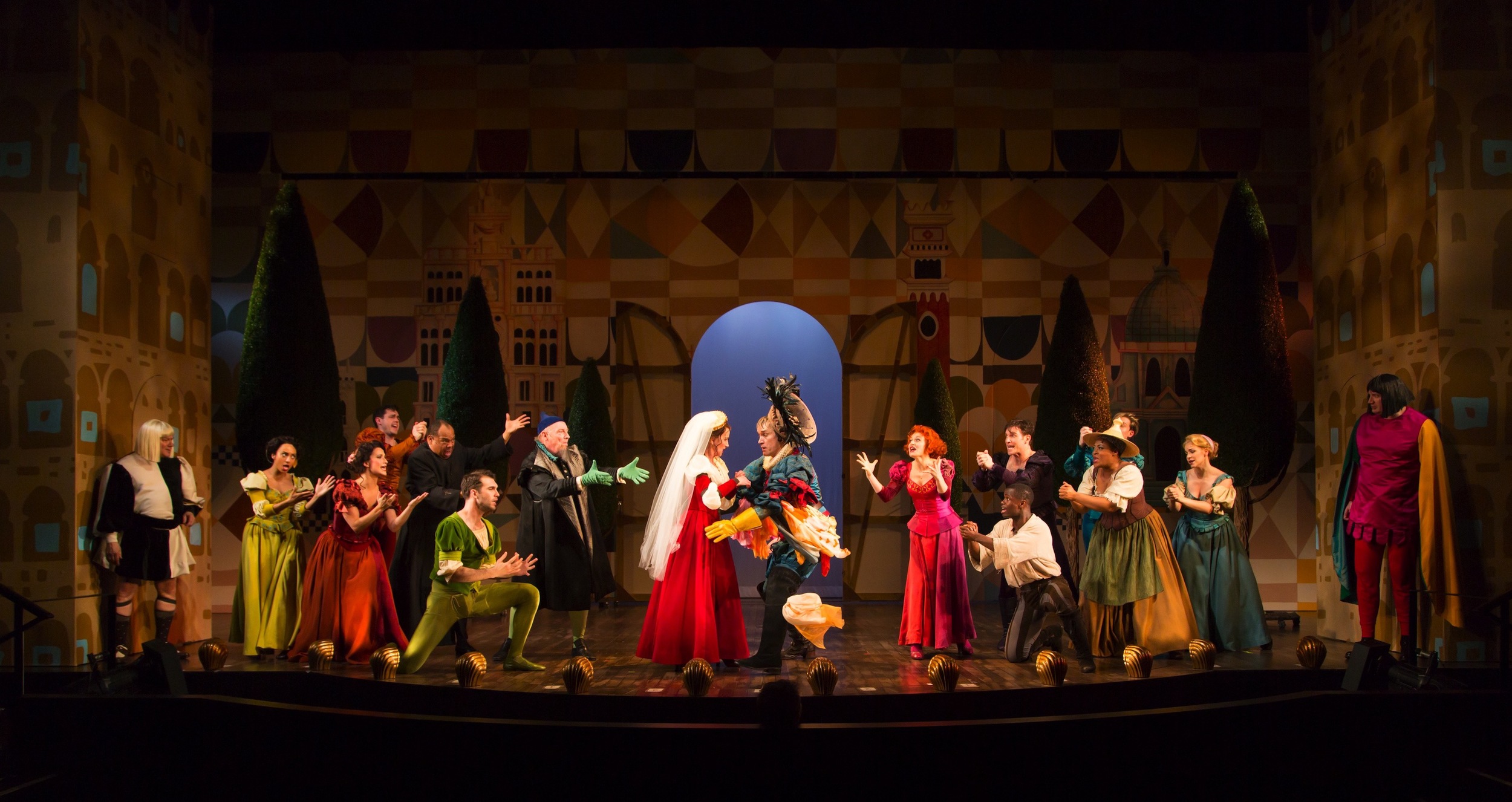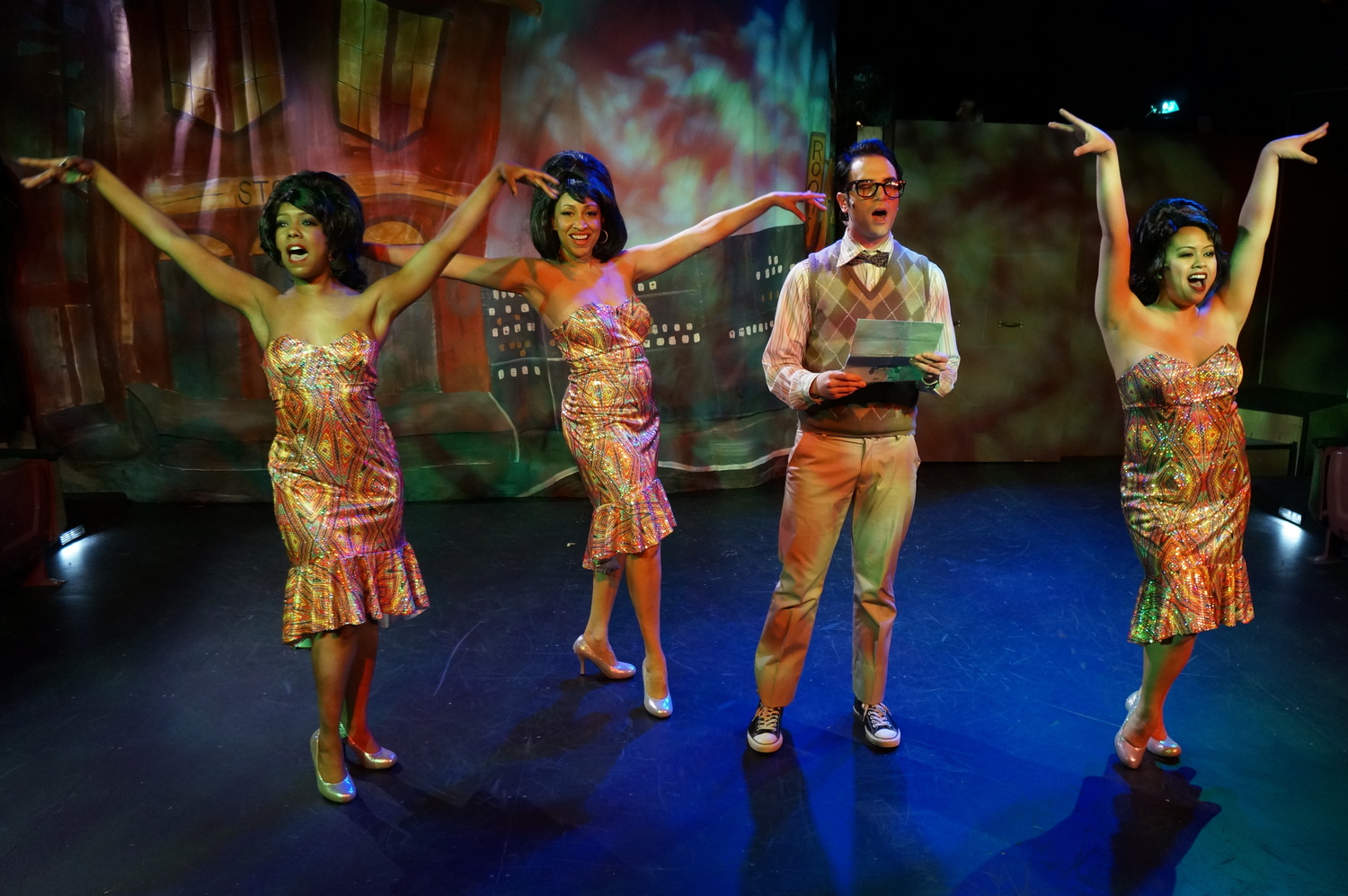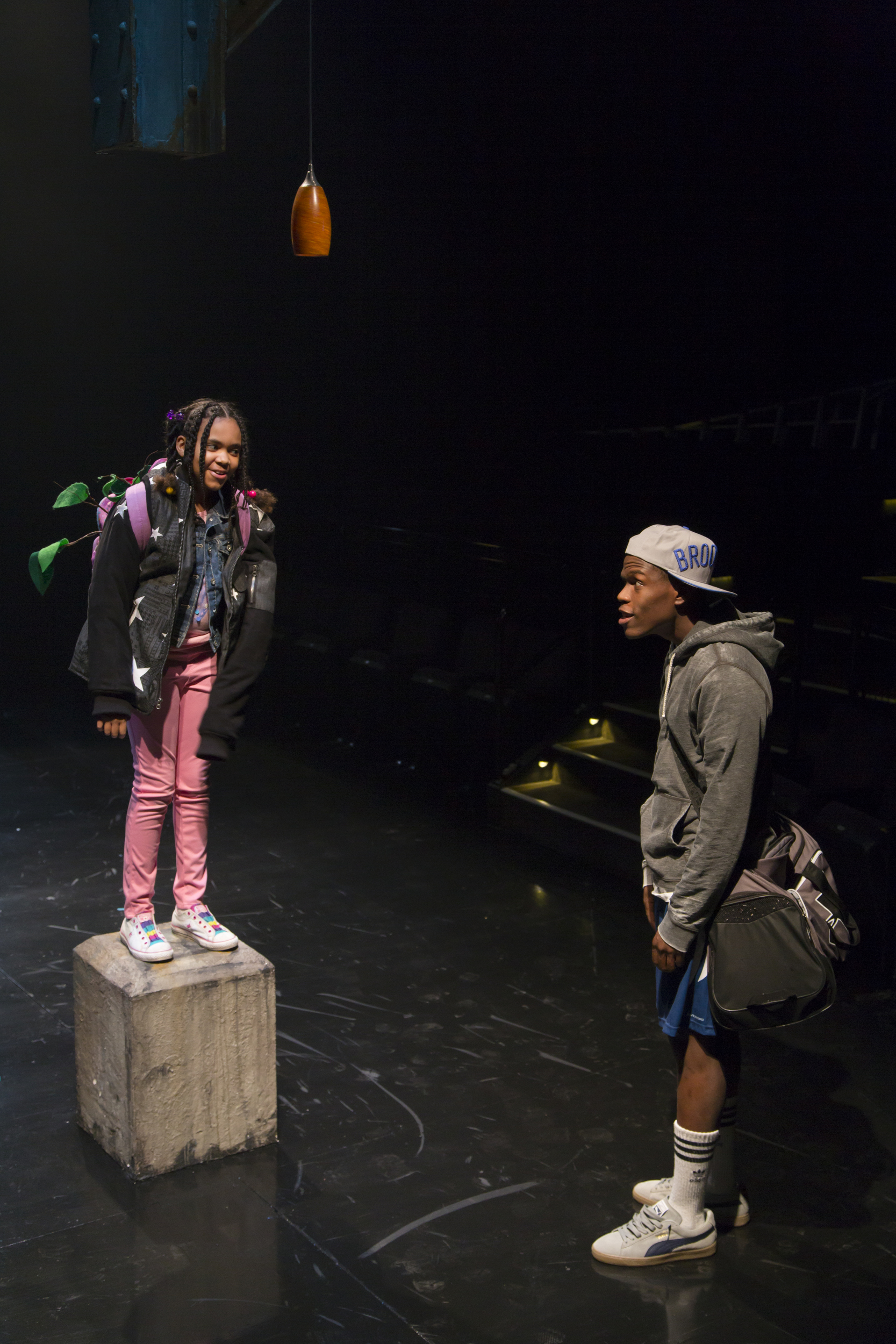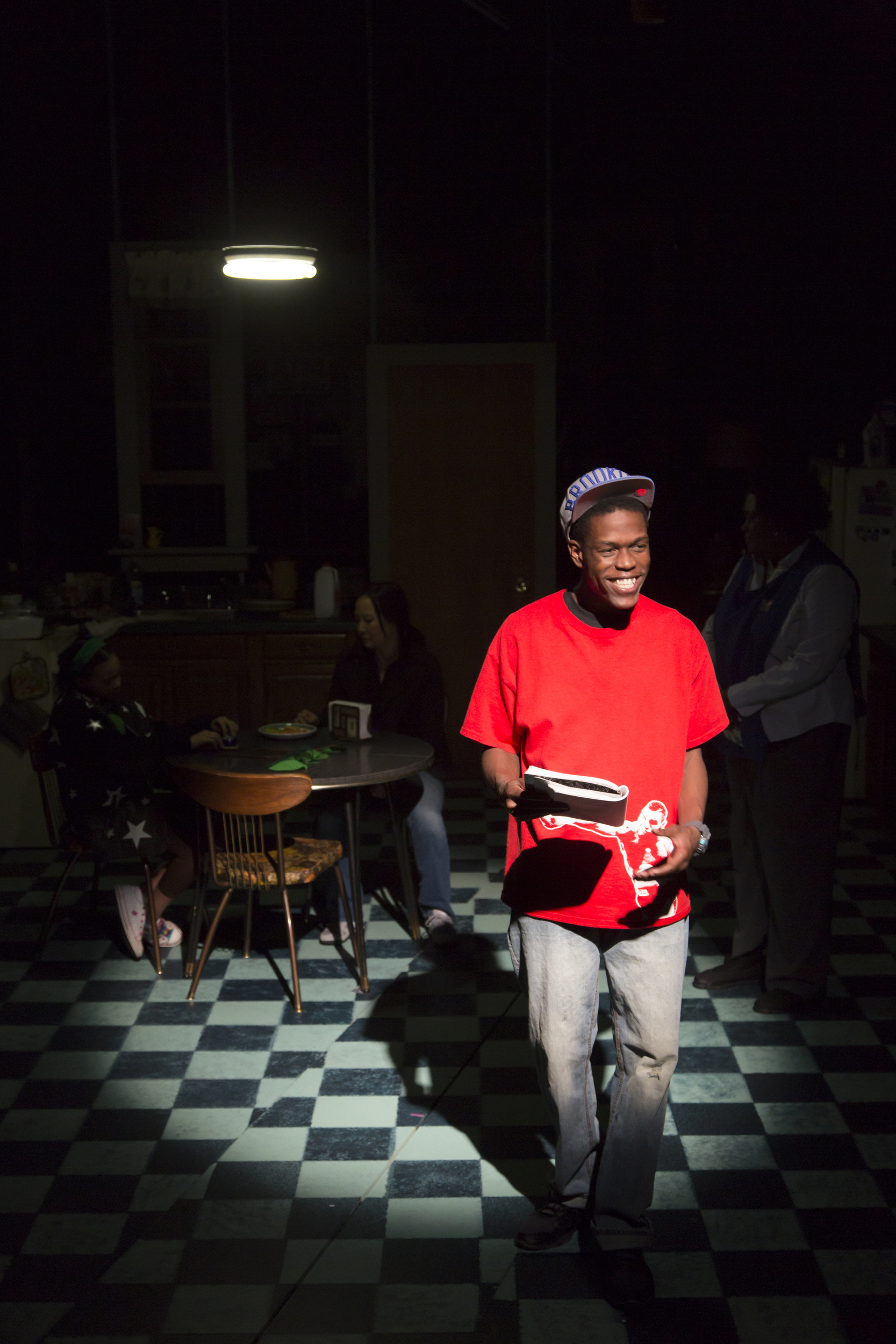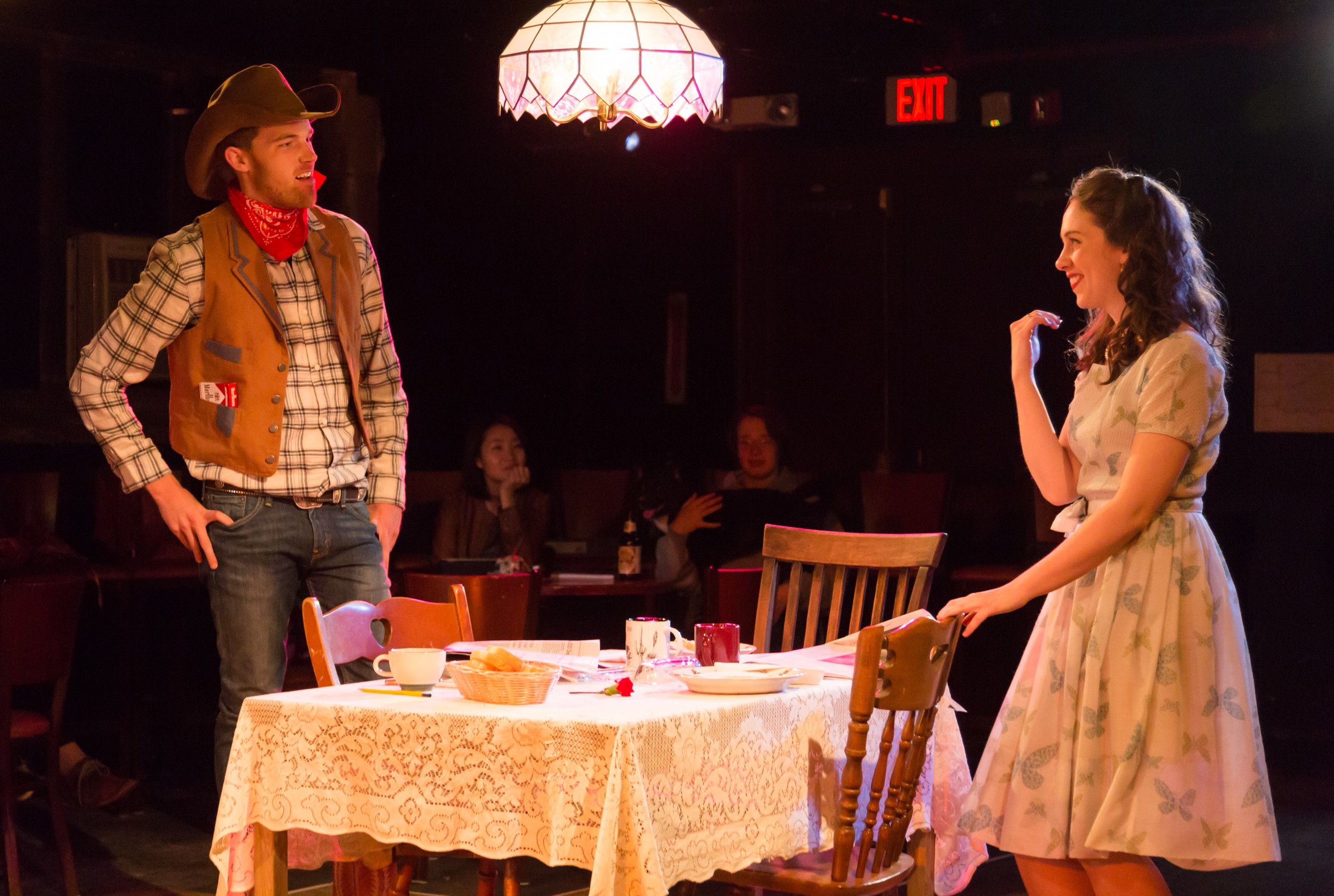The Yale Summer Cabaret prepares to launch Midsummer
In the basement of 217 Park Street, home of the Yale Summer Cabaret, transformation is afoot. First, there is the yearly conversion of the space from what it once was to what it will be. That transformation, so far, involves a load of red paint and a lot of elbow grease to eradicate the décor of last season’s Cab.
Then there’s the transformation that is taking place upstairs in the studio space where this summer’s first show has rehearsed for two weeks. That transformation involves remaking A Midsummer Night’s Dream, one of Shakespeare’s best-known and oft-produced comedies, into something surprising and never-before-seen. A sea-change into something rich and strange?
That’s the intent of Artistic Director Sara Holdren and Co-Artistic Director Rachel Carpman who have adapted the play into a show, called simply Midsummer, that draws upon virtually every play in the Shakespeare corpus. Holdren, who directs the show, is out to “turn the play inside out,” and “stand it on its head.” MND, if anyone doesn't know, is the play with the court of Athens, represented by Theseus, and the woods, to which the lovers flee and where they get mixed up, and where the fairies frolic whilst their King Oberon and Queen Titania fight over a changeling child, and where “the mechanicals” (workers) rehearse their hamfisted attempt to adapt, for the court’s pleasure, the love story of Pyramus and Thisbe. In far too many handlings of the play, one or another of these realms gets short-shrift, but Midsummer aims to recast the emphasis of the play, finding the mix that will manifest as much Shakespearean magic as possible.
To create the transformative landscape she has in mind for her Rough Magic Company, Holdren has asked two scenic designers, Chris Thompson and Claire Deliso, to collaborate. While this is a new endeavor for both, the old “two heads are better than one” adage seems to be true. Thompson and Deliso find that, at the points where either might be stumped at making a choice, having the other’s input gets them through the impasse more quickly and agreeably. And, with the show opening next Thursday for a three-week run, time is of the essence.
Though, it should be said, not as much as is usual for the Cab, which, in term-time, puts up 18 new shows weekly. In summer, things slow closer to the prep time for the Yale School of Drama shows (all but one cast member are either current YSDers or just graduated). For actors in Summer Cab such as Melanie Field and Shaunette Renée Wilson, the extended rehearsal time seems like an almost embarrassing luxury. Over three weeks for rehearsal while not working, as Wilson says, on “at least five other things?” Magical indeed.
What’s more, Holdren professes the ideal of a theatrical troupe—an ad hoc body that forms and maintains itself over time, treating all its productions to a collaborative spirit. That working ethos attracted Field and Wilson from the very first try-outs. Auditioning actors were asked, unusually, to collaborate in group scenes, and the exercise, Field says, provided the actors with a “sense of the generosity to devise and play and to listen and get in tune,” and that in turn promotes the adventures outside the box that the company is after all summer long.
For Andrew Griffin, lighting designer, part of the incentive to create theater in a basement is his working relationship with the team Holdren has gathered. He and Thompson and sound designer Sinan Zafar all did truly magical work last fall for Holdren’s thesis show, The Master and Margarita. Their task is to make lightning strike twice, and to create some of the same artistry at probably a fraction of the cost. Magic, yes, but “rough magic,” don’t forget. Cabaret shows take place in a basement that is also a restaurant, and audiences have to be willing to enter into the spirit of imaginative make-believe that is key to all theater but particularly true of the Cab.
One of the aspects of the show that came out of the team’s initial efforts was a decision to focus a bit more on the “changeling” child that Titania and Oberon are dueling over, another was the idea of making the play the mechanicals enact relevant to the story of the lovers lost in the woods. Improve upon the Bard? Purists will object! Such cautions tend to make Holdren a bit truculent.
“Shakespeare, as a living canon that will last long after we’re gone, can certainly hold his own, no matter what is done with him,” she says. Her approach seeks to avoid two pitfalls: not making the dramatic world clear, as though we should all know it already; and treating as necessary what might be only provisional. The important point is whether one sees Shakespeare as contemporary theater able to be transformed by deliberate re-invention, or as a classic text that must be adhered to.
Carpman calls their process “devising Shakespeare,” and Holdren talks of “an exquisite corpse” approach, like the surrealist method of group composition wherein each participant writes a line of a poem without knowing what precedes it or what will follow. In the end, what might seem a chaos of individual lines and voices becomes “a poem” by means of the magic of formal intention. Everyone intended the poem and the collective spirit guides the result. What might A Midsummer Night’s Dream be if our Will felt able to crib freely from himself throughout? And don’t we, as viewers of so many Shakespeare plays, cross-reference and confuse them all anyway?
In Midsummer, it’s not only Bottom—or perhaps not even Bottom—who will be “translated,” but Shakespeare’s text itself will undergo metamorphosis, with an emphasis on the “meta.” The Rough Magic Company are in pursuit of what Holdren calls “the magical heart of the text,” and that can’t be found without surgical intervention.
The Yale Summer Cabaret’s Rough Magic season opens next Thursday, June 4, with Midsummer, an original adaptation of Shakespeare’s A Midsummer Night’s Dream, playing through June 21.
Yale Summer Cabaret
Midsummer
Based on A Midsummer Night’s Dream and the plays of William Shakespeare
Adapted by Rachel Carpman and Sara Holdren
Directed by Sara Holdren
June 4-21, 2015





